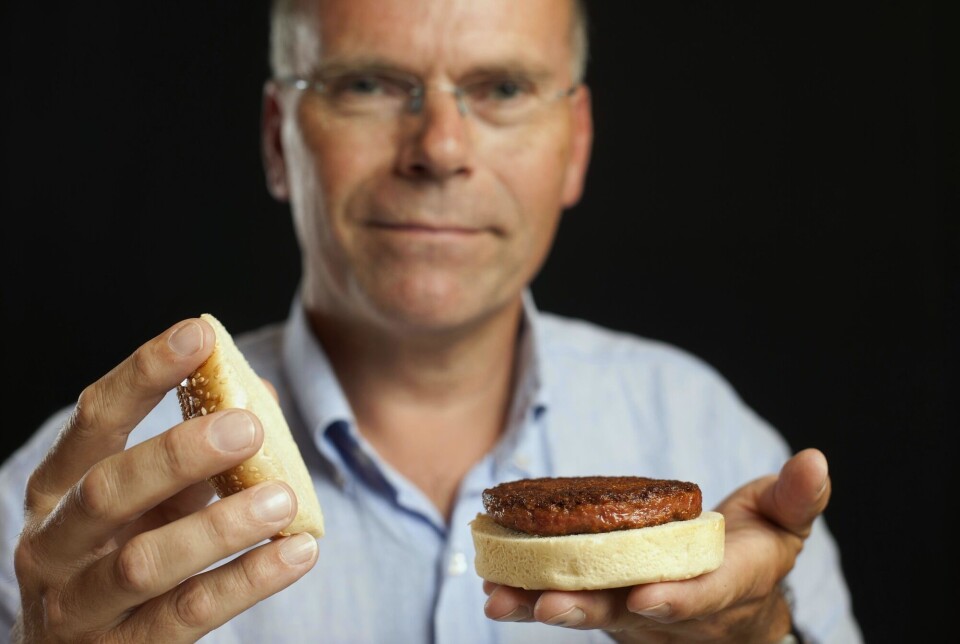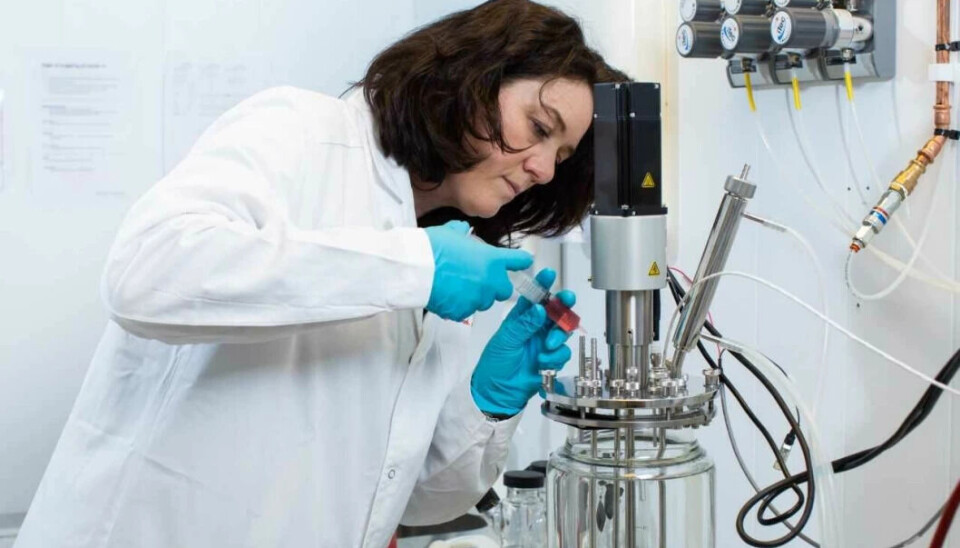
They said lab-grown meat was the future. So how come it's still not on our dinner tables?
Billions of dollars have been invested in cultured meat, but to date no one has been able to cultivate it in large enough quantities. Now Norwegian researchers will try their hand.
We've heard it for years: “Pretty soon we're going to be eating meat that’s been grown in a laboratory.”
Over a decade ago we were already reading that meat made from stem cells was the latest development in meat production, such as in this Norwegian science news article (in norwegian) from 2010. Aftenposten, Norway’s largest newspaper, wrote a few years later that Norway could become a pioneer in laboratory meat. And in 2016, the English-language magazine Inertia published an article about a company that grows real meat from stem cells.
The news has come and gone. A lot of actors are on the playing field. 2021 saw USD 1.4 billion invested in cultured meat businesses and 107 new start-up businesses. 25 countries have at least one company that grows meat, according to the American Good Food Institute.

But cultured meat is still a long way from finding its way into shops and onto our dinner tables.
Why is it taking so long? And is it really possible to grow meat?
Norwegian researchers are now working on a new cultivated meat project after receiving USD 200 000 in support from the Research Council of Norway to continue their research for the next four years.
Optimism to attract investors
Despite being launched again and again by various companies in several countries, lab-grown meat is still not in mass production.
“The optimistic forecasts probably also have to do with marketing and the need for investors and capital,” says Rob Burton of the Ruralis, Institute for Rural and Regional Research.
“We don’t know if they believe their own timelines,” he says.
Burton studies start-ups in the artificial meat market. He is reviewing the financial documents from the last ten years' and conducting interviews about the production and launch of cultured meat.
“The investment in cultured meat is particularly strong in the USA, the EU, Israel and increasingly in Asia. Norway and the other Scandinavian countries lag far behind,” says Burton. He is associated with the new research project.
Just a few kilos a day
The technology originated with medical research and the pharmaceutical industry.
The methods are in place, and scientists are making meat in the laboratory. But the companies only manage to produce a few kilos each day, according to Burton.
The challenge now is to get the meat out of the lab and into large-scale production. No one has managed to achieve that yet.
Most of the development takes place in the private business sector, so we don’t have a lot of insight into what's going on, Burton says.
Results are kept secret rather than being published.
“The research results and reports on how far we’ve actually come are few and far between,” says Sissel Beate Rønning from Nofima. She is heading the new project.
Rønning believes that the public financing of research on lab meat is therefore a positive step.
No steak yet
The fact that more and more researchers and public funding are now coming into play, is a sign that the technology is interesting, according to Rønning.
But the researchers for the Norwegian project have not been able to achieve large-scale production yet, either. Rønning takes a pragmatic stance.
“We haven't managed to make any gigantic pieces of meat yet, but our research is lab-based,” she says.
She has no doubt that growing meat is possible, because many people have proven that it is.
“The problem is that the process is really expensive. So the question is whether it’s possible to make lab meat more cheaply and more available. Our researchers are working on that now,” she says.
Cultured milk available for sale
Rob Burton says that the cultivation of milk proteins has come a lot farther.
In the US, producers have achieved mass production and are already selling ice cream, milk, chocolate and cream cheese in stores. The products will now be launched in India.
The Israeli company Remilk has invested USD 120 million in building up its operations in Denmark. They claim that the factory will produce milk equivalent to 50 000 cows a year.
However, Burton is skeptical about the numbers. He is used to exaggerations by start-up companies about to enter this new market.
“But if artificial milk is produced on this scale, Norwegian milk producers will face problems,” he says.

People are positive
Mark Post, a professor from the Netherlands, showed off the first lab-grown hamburger in 2013. It attracted a lot of attention worldwide, but lab-grown hamburgers are still not approved and available for sale.
Consumers in Europe and the US are positively inclined toward cultured meat, according to a survey that came out this summer. Participants included 3 700 people from seven countries.
Of these consumers, 76 per cent were positive about alternative proteins from plants and cultured meat.
Climate is the most important reason stated by 31 per cent of consumers. Health was also important for many of them.
The survey indicated that there is great potential for increased consumption among people who have completely or partially switched to alternative proteins, assuming the food is healthy, tastes good and is safe. But they are not willing to pay more for the products.
The Boston Consulting Group and the Blue Horizon investment company conducted the survey.
Regulations make it difficult
“The regulations are holding up cultured meat production in the USA and other countries,” says Rønning.
Lab-grown meat still has not been approved by the U.S. Food and Drug Administration. In Europe, several companies are waiting for approval. The only cultured meat product currently approved is a chicken nugget in Singapore.
There are several reasons why approval takes time.
“In the EU, for example, the products have to be shown to be safe for consumers,” says Rønning.

Could pose a threat to Norwegian farmers
The possibilities for cultured meat are huge, according to Rob Burton.
Many of the first companies were started for idealistic reasons. Seven of the first nine companies were vegan. They weren't supposed to make money, according to Burton. Their premise was about not killing animals for food.
But it is also about health.
Livestock live in poor conditions in many countries. Outbreaks of mad cow disease and salmonella have reduced people's confidence in food production.
“Cultured meat and milk would offer a solution for this. These products are sterile, so the risk of food poisoning and contamination are less,” says Burton.
“But at least in the near future, agriculture remains important for Norway and the world. It provides a lot of jobs,” says Rønning.

Rob Burton agrees that cultured meat could threaten farmers.
“For Norwegian agriculture, laboratory-grown meat could become a problem, so we have to be prepared,” says Burton.
Both regular and cultured meat
Rønning's motivation for researching cultured meat is not to create a world free of traditional meat.
“We’re working to not eradicate the traditional meat industry,” she says.
“I don't think we’ll stop using chicken, beef and salmon in the future, but I think we’ll also be producing cultured meat.”
Rønning envisions a world where people eat less meat in everyday life, and instead replace some of it with cultured meat.
She has experienced criticism from people who want to have exclusively lab-grown meat. Many of them believe that meat from animals should be eliminated altogether.
Blood and chicken carcasses
Better utilization of resources is more akin to Rønning's vision.
She and her colleagues want to find out if using residues from the food industry to make cultured meat is a possibility.
“Can we use chicken carcasses and blood from slaughterhouses to make muscle cells? These are things that we pay to throw away,” she says.
Next she plans to investigate whether by-products can find their way back into the food chain, and in that way help us generate less waste.
Eliminating animal production also poses a lot of dilemmas.
Rønning is aware that it will be a while before cultured meat can be as tasty as regular meat. She believes raising chickens is an efficient way to prepare food for the world's population.
“But it could well be that I’ll be quoted in 20 years, and then I'll be saying that killing animals was wrong when we could have grown meat,” she says.
———
Read the Norwegian version of this article at forskning.no
































